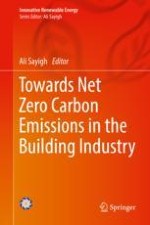2023 | OriginalPaper | Buchkapitel
Thermal Behavior of Exterior Coating Texture and Its Effect on Building Thermal Performance
verfasst von : Islam Boukhelkhal, Fatiha Bourbia
Erschienen in: Towards Net Zero Carbon Emissions in the Building Industry
Aktivieren Sie unsere intelligente Suche, um passende Fachinhalte oder Patente zu finden.
Wählen Sie Textabschnitte aus um mit Künstlicher Intelligenz passenden Patente zu finden. powered by
Markieren Sie Textabschnitte, um KI-gestützt weitere passende Inhalte zu finden. powered by
